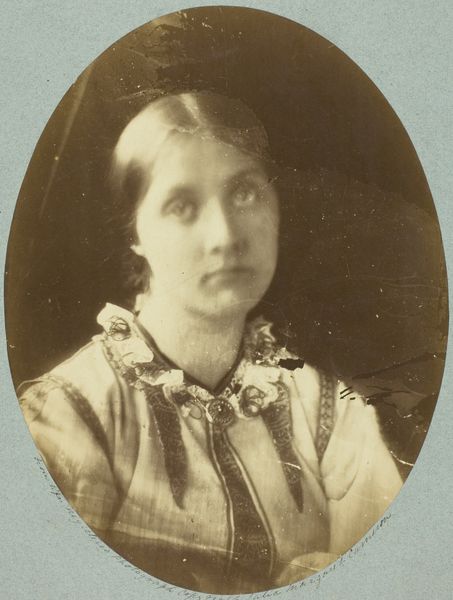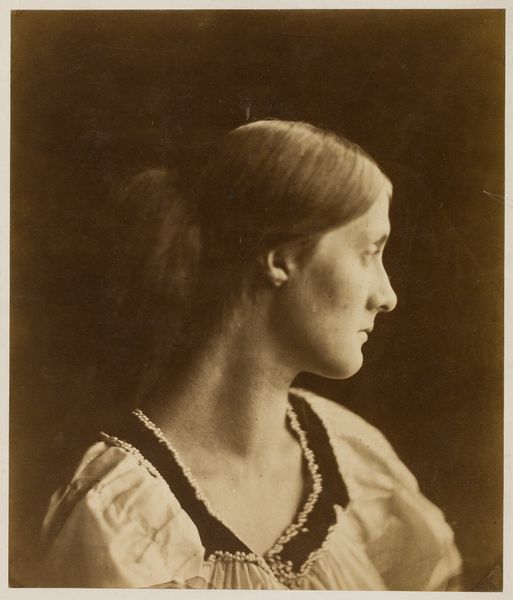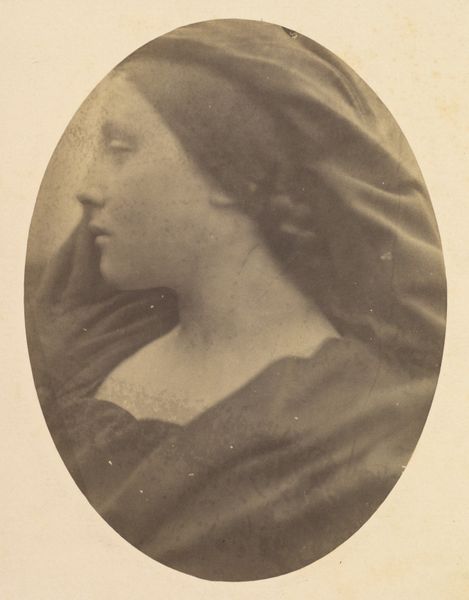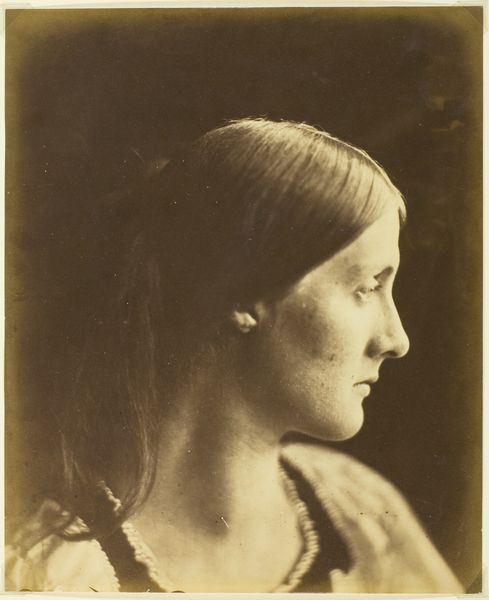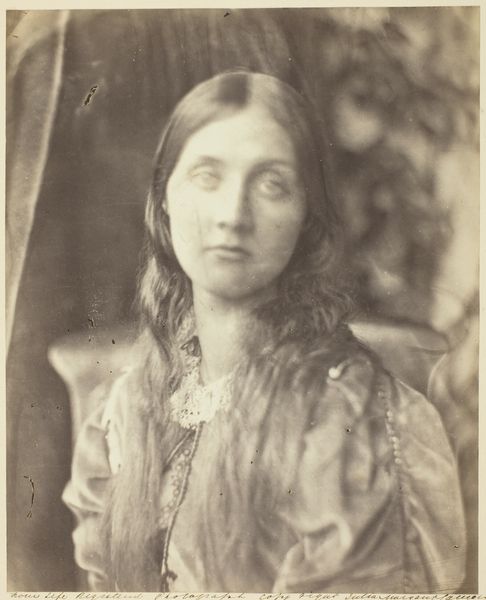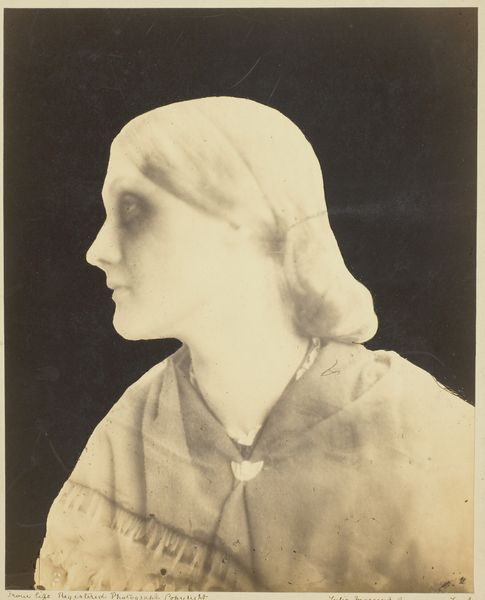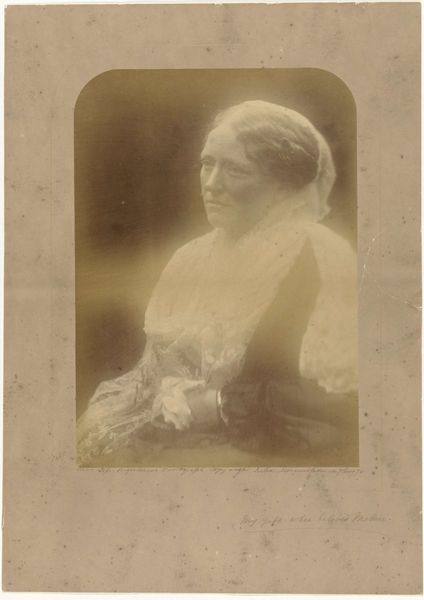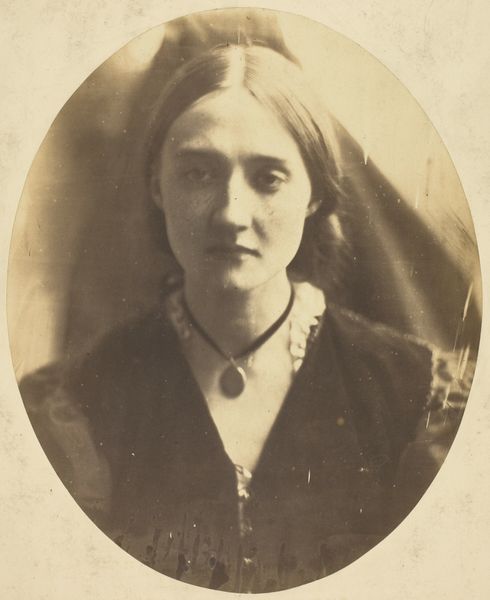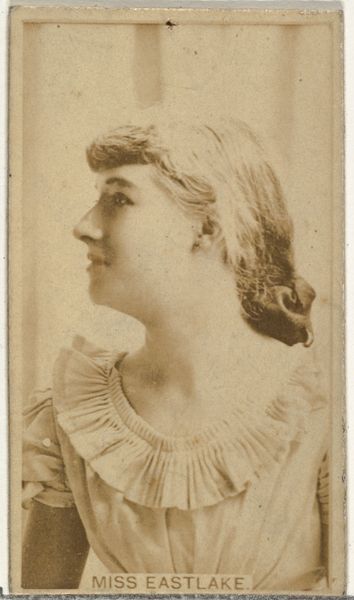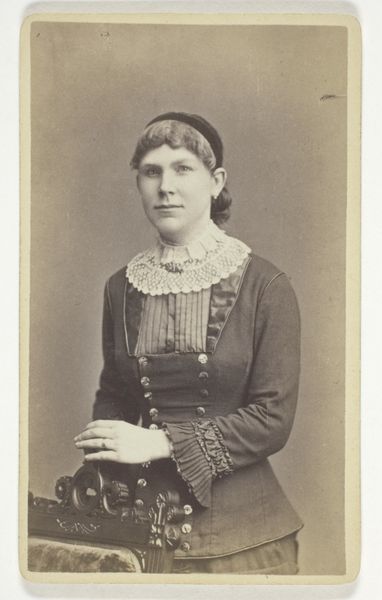
Dimensions: overall: 35.3 x 27.1 cm (13 7/8 x 10 11/16 in.)
Copyright: National Gallery of Art: CC0 1.0
Editor: This is Julia Jackson, a portrait made in 1867 by Julia Margaret Cameron. It’s an albumen print. What strikes me is the intense gaze and how the soft focus gives it almost a dreamlike, ethereal quality. What do you see in this piece? Curator: The eyes are indeed the focal point. They pierce through the sepia tones, carrying a certain weight. Cameron, though celebrated for her soft focus, uses it here to veil, to mystify. What does the repeated oval shape – framing both her face and the entire image – suggest to you? Editor: Perhaps a sense of being contained or idealized? Is it common to read symbols into photography like painting? Curator: Absolutely. Look at the slight blurring – it isn't merely a technical choice. The romantic era deeply valued feeling over crisp realism, suggesting inner depths are more significant. How might the lack of sharpness play into that? Consider that Jackson would later become Virginia Woolf’s mother, shaping another great artistic mind. The visual motif echoes the idea of an egg, an orb of potential creation, a mind brimming just out of full comprehension, don't you think? Editor: That’s a great connection I never would have thought of. Now, I also see a tension between the controlled studio setting and this sense of barely contained emotion. Curator: Exactly. Cameron captures a cultural moment – a woman poised between Victorian constraint and an emerging modern sensibility. The image isn't just a likeness but a coded document about femininity and intellect in that period. Notice her subtle clothing and hairstyle as indicators of this emerging ethos of reform. What hidden narratives do you see coming to light? Editor: The more I look, the more her stare reflects not just serenity, but a quiet strength or perhaps a questioning spirit… I guess it’s a reminder of how one image can carry so much. Curator: Precisely! And that through exploring symbols, we understand that visual vocabularies are how we archive experience and understanding of human memory.
Comments
No comments
Be the first to comment and join the conversation on the ultimate creative platform.
